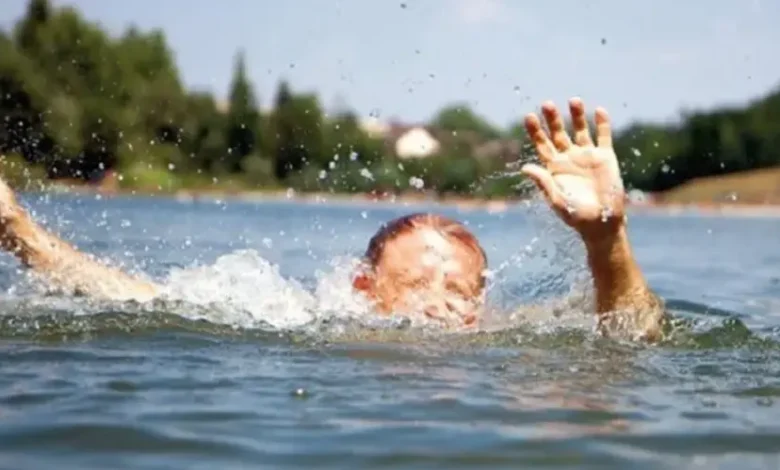Summer water tragedies: how children die in ponds and rivers, advice for parents

Every year, with the onset of heat, Ukrainian reservoirs turn into places where not only recreation, but also tragedies take place. And even in those regions where swimming is officially prohibited due to the risks associated with war, children and their parents continue to go to rivers, ponds and reservoirs. For them, it remains one of the few ways to experience summer, but these attempts to escape from the disturbing reality often end in disaster. The reality is that children are often left alone near water, unsupervised and without understanding how quickly the depth, current or force of the water gushing changes. The war took away from many a safe childhood, but it did not take away the inherent desire to run to the water when the heat is unbearable.
Three stories of one summer
On July 10, 2025, local residents found the body of a 15-year-old boy in a reservoir in the village of Zoryan, Kharkiv region. About this reported in the regional administration of rescuers. His death is the latest in a series of near-weekly accidents this summer. Despite the prohibition of swimming in the region and the risks of a military nature, the teenager was in the water. According to preliminary information, there was no adult person nearby. Law enforcement officers are establishing the circumstances.
Besides, how reported in the Department of Emergency Services of Ukraine in the Kharkiv region, on July 4 in the Nemyshlyan district of Kharkiv at the Petrenko reservoir, a 12-year-old girl disappeared while swimming and managed to swim 15 meters from the shore. People resting nearby could not find her right away. The body was found only later, with the participation of rescuers.
Also, another tragedy occurred in the village of Ingul community in the Mykolaiv region: an 11-year-old girl died, who, together with a friend, went to swim in the Ingul River on her own. When one of them began to drown, the other ran for help. However, the adults’ efforts did not yield results – the child was found dead only the next morning. About this reported press service of the State Emergency Service of Ukraine.
Why is this happening despite the ban?
In many regions of Ukraine, especially in the east and south, swimming in open water bodies is formally prohibited. The reasons are clear: mine danger, shelling, lack of equipped beaches, lack of rescue posts, destroyed infrastructure, but in practice these bans have no effect.
First, many reservoirs remain open, without fences and shifts. Children come there in companies, often without the knowledge of their parents, or under the supervision of those who do not know how to swim themselves.
Secondly, families with children stay for the summer in towns, villages, cities, where there are no organized ways to relax. Swimming in a pond seems like an innocent way to relieve tension, especially when there is no electricity, air conditioning or the ability to go anywhere.
Third, the war destroyed the sense of basic security. People are focused on daily risks – explosions, losses, lack of work, constant worries. In this state, alertness to domestic threats, such as water bodies, may decrease. Parents are tired, overworked, or simply forced to work, leaving their children to fend for themselves.
Advice for parents
Despite all the circumstances – lack of official beaches, disturbing summer, poor infrastructure – it is possible to prevent most tragedies. This requires clear attention from adults, especially in wartime, when every child’s death is another blow to hope.
Here are some tips that can really reduce the risks:
- Do not leave children unattended near water bodies. Even a “familiar pond” can be deadly – a few meters from the shore, the depth can change dramatically.
- Don’t let kids go swimming on their own, even if it’s “literally five minutes” and “everyone does it.” Most tragedies happen under such conditions.
- Explain that the ban on bathing is not a formality. In many regions, reservoirs have not been inspected for mines or scrap metal after shelling. There are no lifeguards, a bottom that can be checked, or a safe shore.
- Do not rely on collective supervision. Even if there are many people near the pond, this does not mean that someone will be responsible for your child.
- Limit the swimming distance. Even older children do not assess their own strength soberly – water erases landmarks, and panic in the event of swallowing water or convulsions paralyzes.
- Avoid swimming in the evening or at night. It is during these hours that the number of deaths increases significantly due to the lack of visual control.
- Explain to the child what to do if he suddenly finds himself in the water and cannot feel the bottom. Teach them not to panic, but to try to stay afloat without excessive movement — for example, lying on their back if possible. Explain that you need to call for help right away, without waiting until it becomes difficult to breathe. But don’t create false confidence – emphasize that the main safety rule is to never enter the water without an adult. Even good swimming skills do not guarantee rescue in real danger.
- Be direct in your explanations. Do not be afraid to say that the child may die – not as a threat, but as a fact that you do not want.
- Track where your child is. In the villages, there is still a widespread opinion that children should be “on the street”, but control over the directions of their walks should be clear.





